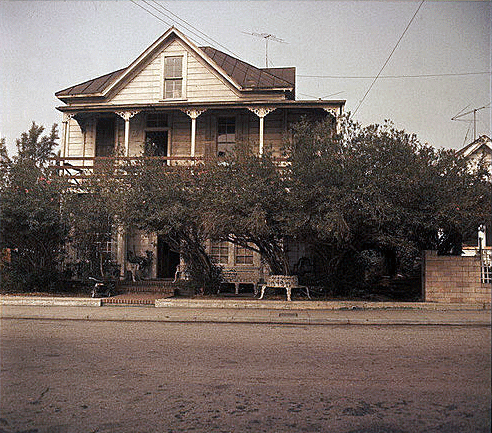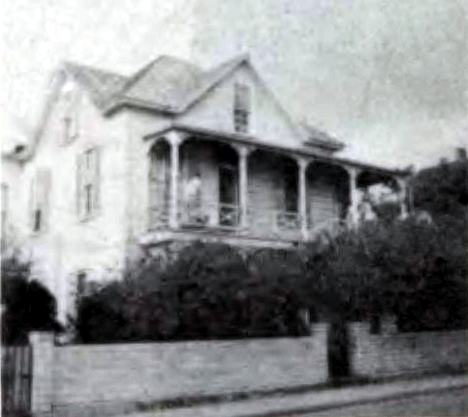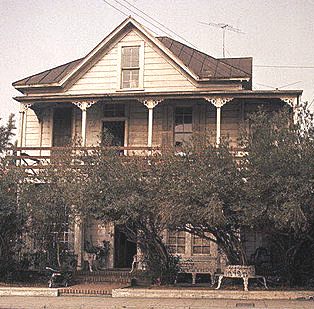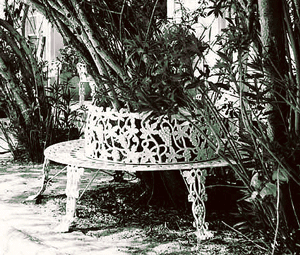
Joe Chavez was busted down on Bunker Hill. ‘Twas late in the Decembertime (the holiday season, for the Love of Mary), and Joe, 50, hungry, hunkered down in his pad at 221 South Bunker Hill, went and thought, I‘m going to go liberate a little something from a nearby market to ease my gnawing gut. What‘s the worst that could happen?

December 29, 1954. Joe exits 221, heads down to a small grocery at 108 South Broadway. Unfortunately for Joe, somebody called in his little lift, a 484, as a 64 (that‘s a petty theft blossomed into an armed robbery to the KMA367). So the coppers arrived a-blazing, but store owner Carl Johnson, 28, already had things handled. Johnson, evidently an ex-footballer, hit Chavez–ham neatly tucked under one arm–with a flying tackle.
Joe rang in the New Year at City Jail, after a trip to Georgia Street Receiving; his tackle resulted in a broken nose.
So what do we know of 221 South Bunker Hill? That it appeared between the 1888 and 1894 Sanborn maps. That it changed comparatively little between 1894 and 1955:


221 was photographed as having a wall in front in the mid-1950s:

Which it lost in favor of this lacework-laden thicket theme:

 About which Bunker Hill photographer Arnold Hylen described as “a touch of old New Orleans along the sidewalk.” He‘s right not only about that wrought iron, which lends a decided Royal Street flourish. This is a shockingly New Orleans house in general. Granted, the steep cross gables are more Gothic Revival than archetypal Crescent City, but this style of roof treatment is seen frequently in New Orleans. The two-tiered porch with full-length windows are a Gulf Coast hallmark. Doubly remarkable is that this house, with its gingerbread at the upper gallery, choice of board over shingle, and single light in the center gable–evocative of the Creole cottage–was constructed contemporary to New Orleans‘s residential blanketing via the shotgun house (the four-bay arrangement of this home mirroring the double shotgun, though the door placement lends and air of the famous New Orleans centerhall villa). Granted, it‘s a little out of place here; those tall windows are intended to dispel mugginess, hardly a chief concern in the realm of Ask the Dust. Nevertheless, this wasn‘t a celebratory tribute to quaint olde New Orleans–it was built by and for Victorians.
About which Bunker Hill photographer Arnold Hylen described as “a touch of old New Orleans along the sidewalk.” He‘s right not only about that wrought iron, which lends a decided Royal Street flourish. This is a shockingly New Orleans house in general. Granted, the steep cross gables are more Gothic Revival than archetypal Crescent City, but this style of roof treatment is seen frequently in New Orleans. The two-tiered porch with full-length windows are a Gulf Coast hallmark. Doubly remarkable is that this house, with its gingerbread at the upper gallery, choice of board over shingle, and single light in the center gable–evocative of the Creole cottage–was constructed contemporary to New Orleans‘s residential blanketing via the shotgun house (the four-bay arrangement of this home mirroring the double shotgun, though the door placement lends and air of the famous New Orleans centerhall villa). Granted, it‘s a little out of place here; those tall windows are intended to dispel mugginess, hardly a chief concern in the realm of Ask the Dust. Nevertheless, this wasn‘t a celebratory tribute to quaint olde New Orleans–it was built by and for Victorians.
Sad to think that as Disney was building his homage to all things bayou down in Anaheim, this little piece of oddball Angelenism was ground up for landfill.

Color image by Walker Evans, shot in October 1962 for the Life magazine piece “Doomed”¦It Must Be Saved” published July 15, 1963.
B/W image courtesy Department of Special Collections, Charles E. Young Research Library, U.C. Los Angeles
Image at right, courtesy Arnold Hylen Collection, California History Section, California State Library

